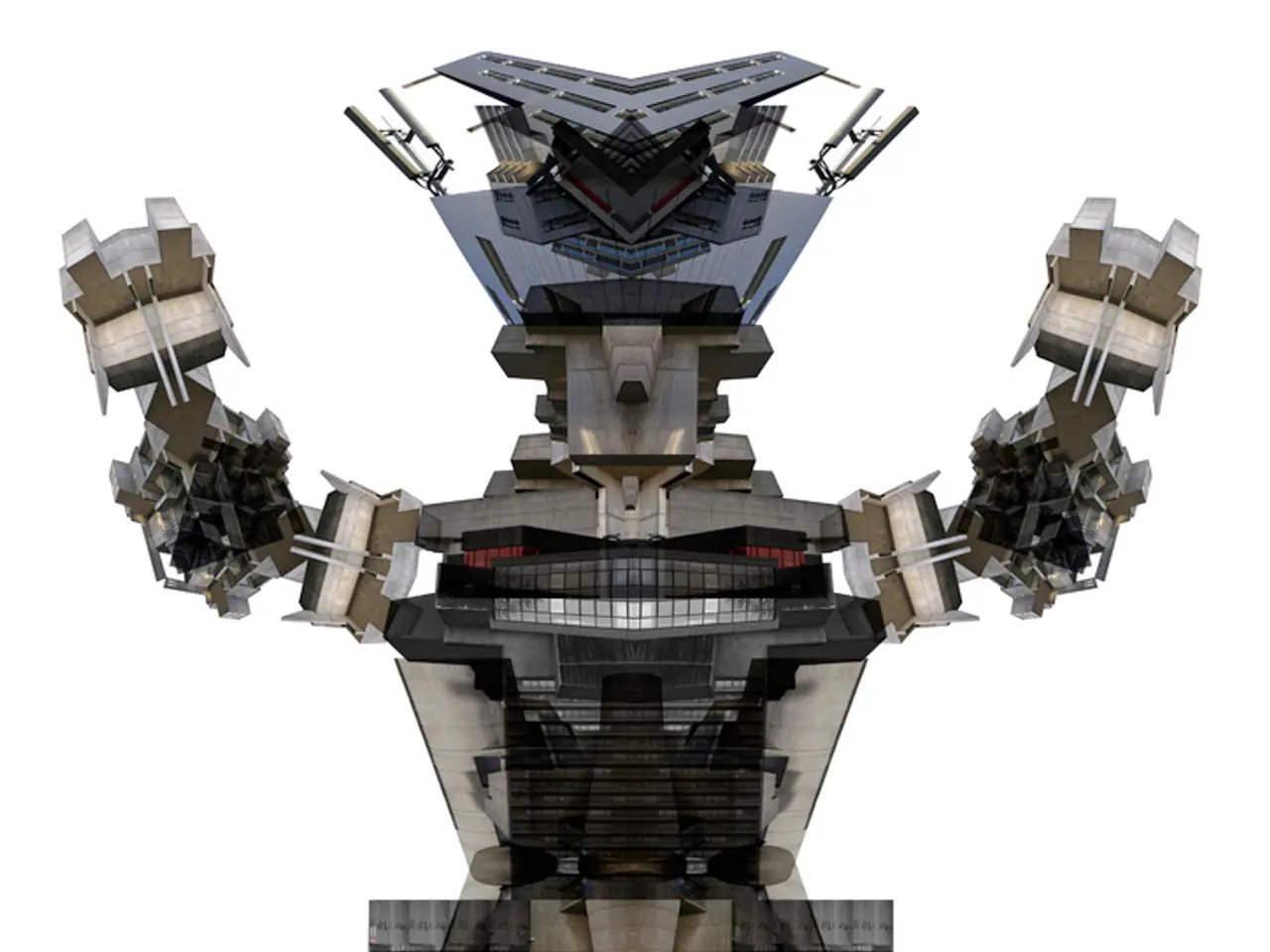Machine Self-Awareness: Introducing a Vision-Based System that Helps Machines Comprehend Their Own Physical Forms
MIT Developed Neural Jacobian Fields (NJF) Enables Vision-Based Control of Soft and Rigid Robots
MIT's Computer Science and Artificial Intelligence Laboratory (CSAIL) has developed a groundbreaking system called Neural Jacobian Fields (NJF) that allows soft and rigid robots to learn self-supervised control of their movements using only visual input from a single camera [1][3][4]. This innovation eliminates the need for embedded sensors or pre-programmed control models, offering a significant leap in the field of robotics.
The NJF system figures out which motors control which parts of the robot without being programmed, a feature that sets it apart from traditional robotic systems [2]. This approach allows robots, including soft robotic hands, to autonomously understand their 3D shape and how their bodies respond to motor commands, by training a neural network that jointly maps the robot's physical structure and its motion responses.
Key potential applications and advantages of NJF in soft robotic control include:
- Sensor-free, vision-based control: NJF removes the dependency on physical sensors or complex mathematical models that are traditionally required for precise actuation in soft robots. Instead, it uses only monocular camera data to perceive and control the robot in real time [1][3][4].
- Adaptability and design flexibility: Because NJF infers internal mechanics from visual feedback of random movements without needing prior knowledge or human intervention, it supports more creative and diverse soft robot designs that would otherwise be difficult to model or instrument [1][2].
- Real-time, efficient control: The system can operate closed-loop control at approximately 12 Hz, making it more computationally efficient than physical simulators typically used for soft robots, which tend to be too resource-intensive for real-time use [2][3].
- Generalizability and robustness: NJF builds a dense map of how the robot’s body deforms or moves in response to control inputs, enabling accurate prediction and adaptation even with noisy or incomplete data [3][4].
- Broad applicability: The method has been successfully tested on various robots such as pneumatic soft robotic arms, rigid robotic arms, 3D-printed arms, and rotating platforms—highlighting its versatility across different robot types and structures [2].
These advantages suggest NJF is a pioneering approach that can significantly advance the control of soft robotics in delicate tasks (like surgical assistance), operations in confined or irregular spaces, and scenarios requiring flexible and adaptive robot behaviors, all with minimal hardware overhead and greater autonomy [4].
The NJF system has proven robust across a range of robot types, including soft, rigid, and 3D-printed robots. It builds a dense map of controllability by modeling how specific points deform or shift in response to action. The system learns both the robot's shape and how it responds to control signals, just from vision and random motion.
Vision is seen as a resilient and reliable sensor, opening the door to robots that can operate in messy, unstructured environments without expensive infrastructure. The core of NJF is a neural network that captures two intertwined aspects of a robot's embodiment: its three-dimensional geometry and its sensitivity to control inputs.
The motivation behind the NJF system is to expand the design space for robotics and to achieve control of capability in a more flexible manner. The system's development is aimed at lowering the barrier for robotics, making it affordable, adaptable, and accessible to more people. An open-access paper about the work was published in Nature on June 25.
With the NJF system, robots gain a kind of bodily self-awareness, a significant step towards creating more autonomous and adaptable robots that can operate effectively in a wide range of environments.
[1] https://www.csail.mit.edu/news/soft-robotic-hand-grasps-objects-without-sensors [2] https://www.csail.mit.edu/news/neural-jacobian-fields-enable-robots-learn-their-bodies [3] https://www.csail.mit.edu/news/neural-jacobian-fields-enable-soft-robots-learn-their-bodies [4] https://www.csail.mit.edu/news/neural-jacobian-fields-enable-robots-learn-their-bodies-and-grasp-objects-without-sensors
- The groundbreaking NJF system developed by MIT's Computer Science and Artificial Intelligence Laboratory (CSAIL) enables soft and rigid robots to learn self-supervised control of their movements using only visual input from a single camera.
- This innovation in robotics eliminates the need for embedded sensors or pre-programmed control models, offering a significant leap in the field of engineering.
- The NJF system inferring internal mechanics from visual feedback of random movements without needing prior knowledge or human intervention, supports more creative and diverse soft robot designs.
- The system can operate closed-loop control at approximately 12 Hz, making it more computationally efficient than physical simulators typically used for soft robots.
- Vision-based control provided by NJF offers potential applications in delicate tasks, operations in confined or irregular spaces, and scenarios requiring flexible and adaptive robot behaviors.
- The NJF system's core is a neural network that captures two intertwined aspects of a robot's embodiment: its three-dimensional geometry and its sensitivity to control inputs.
- With the NJF system, robots gain a kind of bodily self-awareness, a significant step towards creating more autonomous and adaptable robots.
- An undergraduate or graduate student interested in robotics, physics, or artificial intelligence might find the article about Neural Jacobian Fields, published in Nature on June 25, insightful for their learning and research in this field.




